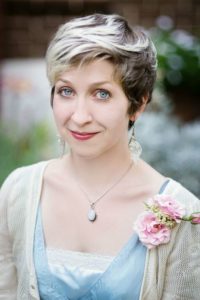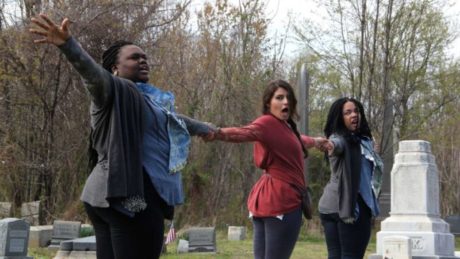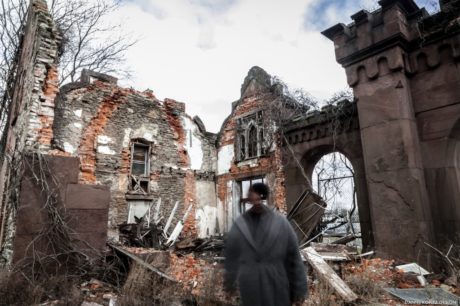“Beowulf” is an Old English epic poem consisting of 3182 alliterative lines, one of the oldest literary documents in Anglo-Saxon literature. Beowulf has a long history of having been passed on through the oral tradition in Germany, Scandinavia, Ireland, and Britain, before an anonymous writer, probably a monk, composed Beowulf, the epic poem, depicting a life filled with violence and death, but also with chivalry and clashing values and belief systems.
According to John Leyerle (1991), “the poem was recorded by Christian Anglo-Saxons who had largely converted from their native Anglo-Saxon paganism around the 7th century.” Robert F. Yeager (2007), pointed out that “the only Biblical references in Beowulf are to the Old Testament, and Christ is never mentioned. The poem is set in pagan times, and none of the characters is demonstrably Christian.”
“Beowulf” has attracted countless translations over the course of time, many more literary and historical interpretations, and a sleuth of creative works, including at least 14 cinema and television adaptations and references, 8 novels, 6 graphic novels, 7 musical works, 8 operas and theatre productions, 7 comics, 1 board game, and 6 video games.
Beowulf/Grendel, co-created and directed by Maura Krause, may well be the first dramatization of the popular old poem that takes place at a cemetery.
Henrik: Given the strong interest in one of the oldest literary documents from the Anglo-Saxon world, what attracted you to this ancient masterpiece?
Maura: The choice of Beowulf for adaptation was actually that of Mike Durkin, Artistic Director of The Renegade Company [in Philadelphia]. Prior to this project, the poem hasn’t held much interest for me. I read Seamus Heaney’s translation a while back because I love Heaney, but found that I far preferred his other work. What really sold me on Beowulf as a project was Mike’s proposal that it take place in a cemetery – I love historic cemeteries and felt that the challenge of adapting an epic poem to a strange and attention-grabbing location was interesting. I also felt an interest in returning Beowulf to its origins of oral storytelling.
Few works have seen as many translations and interpretations as the anonymous “Beowulf.” Which translation did you use and why?
The piece uses references to and excerpts from both the Seamus Heaney translation from 1999 and a translation by Meghan Purvis from 2013. Heaney brought the weight of tradition and some incredibly rich, complex language to our piece. Purvis gave us lyricism—many of our songs are adapted from her text—ambiguity, and a sense of a world populated by individuals, rather than archetypes.

Oxford professor J. R. R. Tolkien, the beloved author of the “classic high-fantasy works, The Hobbit, The Lord of the Rings, and other novels, noted that the poem contained a great deal of Anglo-Saxon paganism, written during the early years of the Christianization of England and therefore dates to the 8th century. How much does the clash between paganism and Christianity feature in your play?
Not at all, really. We used the concept of God as score-keeping audience to some degree, a gaze—watching and judging our deeds. I would say we also played with the incantatory nature of Old English, which brings a certain pagan quality to some moments in the show.
What did you concentrate on in Beowulf/Grendel, and what were the parts of the original text that you chose to cut?
Although my favorite part of Beowulf has always been the unexpected revenge by Grendel’s mother, we focused on the first half of the poem, which is the part that most people know. We are exploring what we as social creatures expect from narrative, from a story we think we know, and in order to do that, the piece had to stick with the familiar elements of the plot. I will say that we toy with moments that occur after Beowulf’s fight with Grendel, and that the presence of Grendel’s mother is definitely felt in the piece.

Although “Beowulf “deals a lot with legends of violence and valor, it was also written for entertainment in those days. What did you do to connect the historic and fictional events with our own time and make it entertaining—in the wider sense of the word?
I tend to feel very little connection to pieces that overtly draw parallels between current events and the past, so Beowulf/Grendel definitely eschews that. I do think that there is a huge amount of relevance in the questions we hope the piece asks, such as: Who is telling the story? What words are they choosing to use? In what light are they casting the deeds of one person versus the deeds of another? What are you as listener projecting of yourself onto this story/character?
We focused more on creating a sense of intimacy and contemplation than on creating entertainment value, although a foundation of the piece is song, one of the oldest forms of entertainment.
Even though the poem was written during violent times, Beowulf shows his strong chivalrous tendency when he treated the monstrous Grendel as an equal and refused to use any weapon in their struggles. How did you treat that scenario and how contemporary is your version of these battles?
We approached anything with the overtone of “chivalry” with a lot of skepticism. In the poem, actually, Beowulf’s men begin attacking Grendel with their swords, so for us that promise of Beowulf’s to fight unarmed felt a little like lip service to a kind of heroic expectation, and we definitely explore that in multiple moments. I’ll say that while the battles feature prominently for us thematically, no one should expect a period-appropriate violent confrontation.
Rather than writing a script about Beowulf, the hero, and Grendel, the monster, you went further and found some personal connections, including those of the three performers, to these archetypal figures. Tell us more about those connections and how they impacted your writing of the play.
Archetypes exist for catharsis, don’t they? To allow people to find something they are struggling with pared down and simplified. Whether subconscious or conscious, narrative allows us to process and explore the paths of our minds in safe ways. For myself and the performers, we found a great deal of resonance in the journeying that surrounds Beowulf, and in the exploration of how hard it is to shape a life that feels truly representative of one’s self.
Everyone has felt paralyzing uncertainty at some point, and this is perhaps the thing we most injected into the piece – no matter how bombastic or epic the original story might come across in places, all of these characters must have had moments of second-guessing themselves. We tapped into that, and while I won’t speak for the performers, I definitely tapped into grief and questions of my own evolution as a human being.
The Renegade Company, under Artistic Director Mike Durkin, has ventured out to perform in a wide range of environments: churches, museums, theaters, even a private home with a bathtub serving as the stage—and now you are going beyond the fourth wall. Tell us about your choice of taking your audience to places that many people associate not only with the death of others, but their own demise one day.
The location of the cemetery was Mike’s proposal. I agreed because I love cemeteries; they make me aware of how I’m using my time as a living body, and how there is a huge unknowable amount of humanity that came before me. I think this resonates so strongly with our version of Beowulf that it can’t help but make for a heightened experience of the piece. Ancestry and predestination feature prominently in our text and a place associated with death felt right for such a journey.

Your Beowulf and Grendel become alive at the Mount Moriah Cemetery in West Philadelphia, where the graveyard almost becomes a character in the play. Tell us more about your choice of this particular burial ground.
I wanted to set the piece somewhere that was at the same time familiar and unfamiliar, and Mount Moriah was perfect for that. The wild and sprawling nature of the Philadelphia side of the cemetery made me feel that out of many gorgeous cemeteries in Philadelphia, Mount Moriah was right for Beowulf/Grendel.
Additionally, the Friends of Mount Moriah Cemetery were supportive and engaged early on – their board president, Paulette Rhone, came to tech rehearsals and our preview, and I’ve had an active and satisfying dialogue with her throughout the process. I hope that the show will bring people out to a place they’ve never been before.
What gave you the idea to structure your piece in such a way that audience members divide up on a walking tour through the graveyard, and how do those actions correspond to the original epic poem?
As I read Heaney’s “Beowulf,” I began to feel more and more like Beowulf and Grendel were essentially the same person – we only know who is the hero and who is the monster because we’re told, because the perspective is on the side of Heorot [“the hall and throne room built by the Danish king Hrothgar, where Grendel’s attacks against humans take place”]. They both have achieved a level of notoriety because of their capacity to kill, and they both travel to a place specifically for the purpose of violence.
A sympathetic Grendel has been explored many times before, and so I decided to dig into the ambiguity and parallels between both characters, rather than privileging one of them. The physical opportunity to split an audience and ask them to think about who is who felt like a way to bring people into the show, an active way to explore a core question. I also think that the experience of reading the original poem is a little inexorable – you are pulled through the story by the lines, by the rhythms, and the chance to literally pull people through the physical space of a narrative felt exciting.
This year, Renegade has begun a collaboration with a clinical herbalist, Molly Landergan, of Telegraphic Tree, who has explored healing modalities, including Reiki, Integrated Energy Therapy, Forrest Yoga and Mindfulness Meditation. How did you integrate part of her work into your play about Beowulf/Grendel?
Molly and I connected early on, and pretty quickly honed in on ways to include Telegraphic Tree in Beowulf/Grendel. She was amazing, and actually went out to Mount Moriah in the fall and harvested a bunch of mugwort [”aromatic plants in the genus Artemisia”], which she then dried and made into smudge bundles for us. The burning of smudge bundles is a traditional way to cleanse and prepare a space, and so we use them at the beginning of the show to carve out a space for us within the vastness of the cemetery. They have a ritual quality, which is marvelous, and are connected to the site.
Molly and I also spent an evening inventing a blend of tea that we serve at the end of the show. It is meant to allow audiences to come down from the piece, to warm up a little on these chilly spring nights, to experience a moment of generosity after a challenging and experimental performance.
As a devised walking show set in a cemetery, Beowulf/Grendel could be considered an ambitious undertaking. At the same time, you attracted a number of people who supported your project.
In comparison to many theatre productions, I don’t think we had very many people at all. However, thanks to the folks we DID have, I wouldn’t call it MY project. It is the project of The Renegade Company, with initial parameters set by Mike, and the final product of not only myself but my fellow creators and the piece’s performers: Ainyé AnnaDora, Nia Benjamin, and Merri Rashoyan. There were a lot of challenges, such as limited budget, transport out to Mount Moriah (our stage manager CJ made much of this possible), Philadelphia’s moody spring weather, and above all, the cemetery’s many ticks.
There is writing from all three of the performers and myself in the piece – I collated it and edited it with the help of Renegade’s amazing associate and dramaturg Erin Washburn. Ainyé did the costumes, and we added one other traditional theatre designer, the incredible and inventive Sara Outing on props, in addition to working with Molly Landergan as sensory designer. I would definitely say the piece would have been impossible without any of these people. I hope that they all have a sense of ownership towards our Beowulf/Grendel.

What did you learn about yourself as a director through the whole Beowulf/Grendel experience?
I think I’m still too close to the piece to know what its lasting lessons for me personally might be. I suppose I learned that I feel a strong urge to challenge what the concept of narrative means to an audience, and I don’t think I’m done with that idea yet at all. The piece definitely contributed to my growing interest in ritual, and helped coalesce my thoughts about how we as social beings need communal markers of transformative moments. To be honest, Beowulf/Grendel is such a huge experiment in so many ways that I just don’t know what will stick yet!
Thank you, Maura and your creative collaborators—you “flower of warriors.” You all recreated “dear Béowulf” who was asked to choose, “the better part, eternal rewards.” Let me end with this quote from Beowulf, only two hours away from actually walking with your actors through the old Mount Moriah cemetery, reflecting on my life, on all my contemporaries, and on all those that will come after us:
“As I knew how, swearing no unholy oaths,
Seeking no lying wars. I can leave
This life happy; I can die, here . . . .
Beowulf/Grendel end its run tomorrow May 24, 2016 at Mount Moriah Cemetery- 62nd and Kingsessing Avenue, in Philadelphia, PA. For tickets, purchase them online.
LINK:
Review of ‘Beowulf/Grendel’ at Renegade Theatre Company in Philadelphia by Emily Kluver.






Hats off to you Dr. Henrik. A very articulate interview indeed.